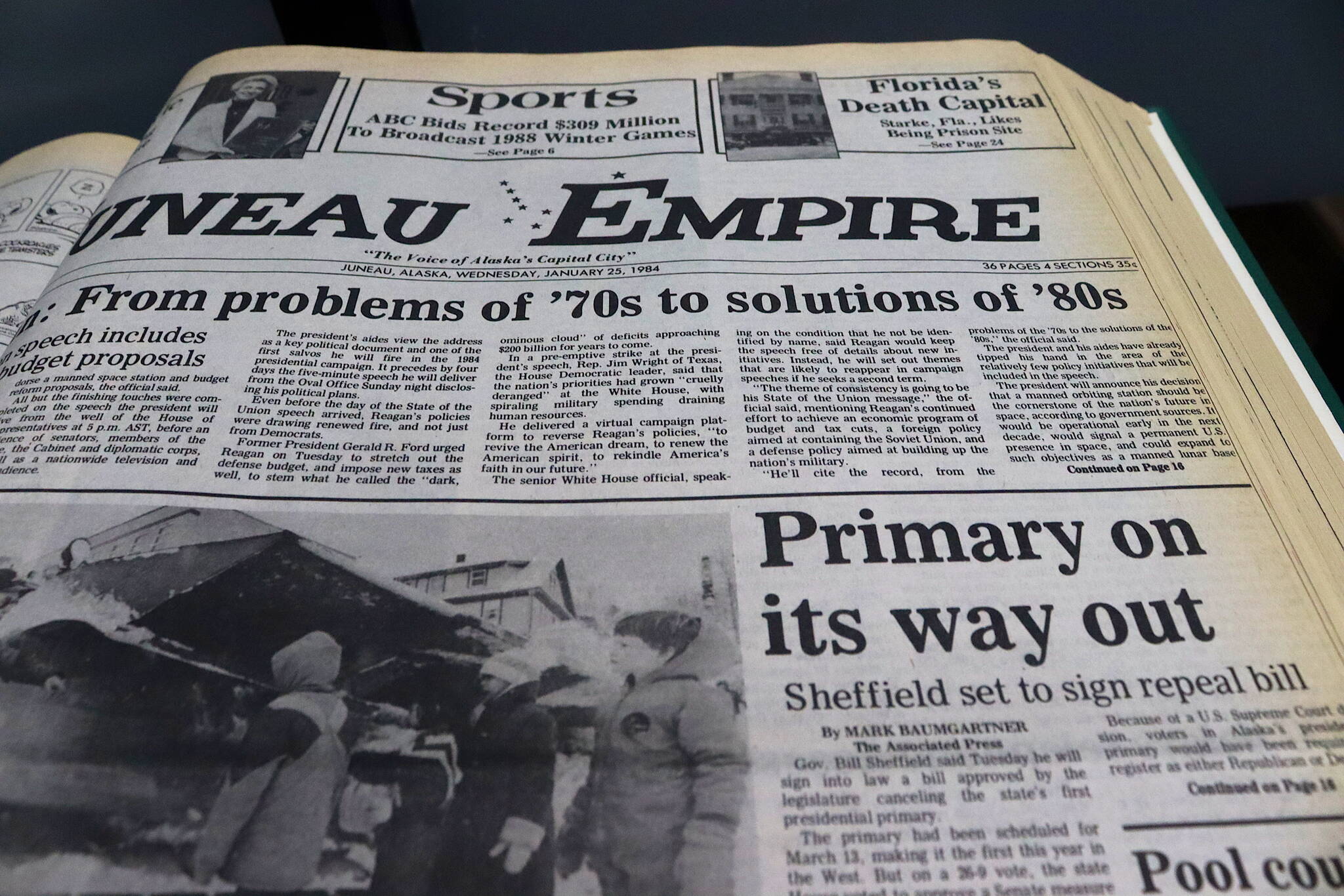Empire Archives is a series printed every Saturday featuring a short compilation of headline stories in the Juneau Empire from archived editions in 1984, 1994 and 2004.
This week in 1984, Gov. Bill Sheffield said he will sign into law a bill approved by the Legislature canceling the state’s first presidential primary. The primary had been scheduled for March 13, making it the first this year in the West. But on a 26-9 vote, the state House voted to approve a Senate measure to repeal the election. “This is one of the saddest days” in the history of the Legislature, said Rep. Mike Miller, D-Juneau, leader of the minority Democrats, who unsuccessfully argued to keep the election. Sheffield, a Democrat, has been an active supporter of the repeal drive, which proponents said would save most of the $1 million set aside for the primary. Critics of the election also complained that with 58% of Alaska’s voters registered as nonpartisan, few would bother with the election.
Today Alaska remains irrelevant in presidential primaries, with most major party nominees either decided before the state votes (as is the case this year) and/or the major candidates generally bypassing the state during their campaigns. However, the state’s primaries have grabbed national attention in a different way by being among the few to use ranked choice voting and open primaries, where the top four finishers for statewide offices in the latter advance to the general election regardless of party.
Original Story: “Primary on its way out,” by Mark Baumgartner. 1/25/1984.
This week in 1994, about 2,200 state nurses, prison guards, firefighters and probation officers are being ordered to pay a higher share of their medical bills. The order, stemming from an arbitrator’s ruling in a contract dispute, brings workers’ health benefits down to the same level of higher deductibles and co-pays that were issued on most other state employees last March. The cuts in benefits could increase each worker’s share of his or her annual healthcare costs by up to $900. It could also save the state about $171,000 a month for the 2,200 employees. The cuts stem from the state’s 1992 effort to reduce an expected 30% increase in health insurance premiums.
Today benefits for public employees continue to be a foremost political issue. At the current forefront are retirement benefits, with a bill restoring a pension system advancing to the Senate floor this week. However, as with past and current debates about such benefits — including health insurance — opposition is being expressed by some policymakers concerned about costs.
Original Story: “Arbitrator sides with state on health costs,” by Ed Schoenfeld. 1/26/1994.
This week in 2004, Bonnie Lanz, the truancy tracker for the Juneau School District, is among those whose jobs will be cut as part of a package of $2.47 million in reductions proposed by the Juneau School District. Lanz said each truancy situation is unique and she’s resolved many through personal interaction with youths, in some instances able to relate directly with them about experiences such as losing a parent at an early age. Principals and assistant principals also say they’re too busy to do everything Lanz does. About 10% of Juneau’s middle schoolers and high schoolers are absent, according to a district report of the 2002-03 school year.
Today high absentee rates are a chronic problem in Juneau and other school districts statewide, with school board members last year suggesting the hiring of a truancy officer to help address the problem. However, in late December district officials learned they were facing a massive deficit — about $8 million as of this week — for the current fiscal year that has them evaluating all non-mandatory functions of the district for budget cuts, as well as consolidating schools.
Original Story: “Truancy officer may laid off,” by Eric Fry. 1/26/2004.

